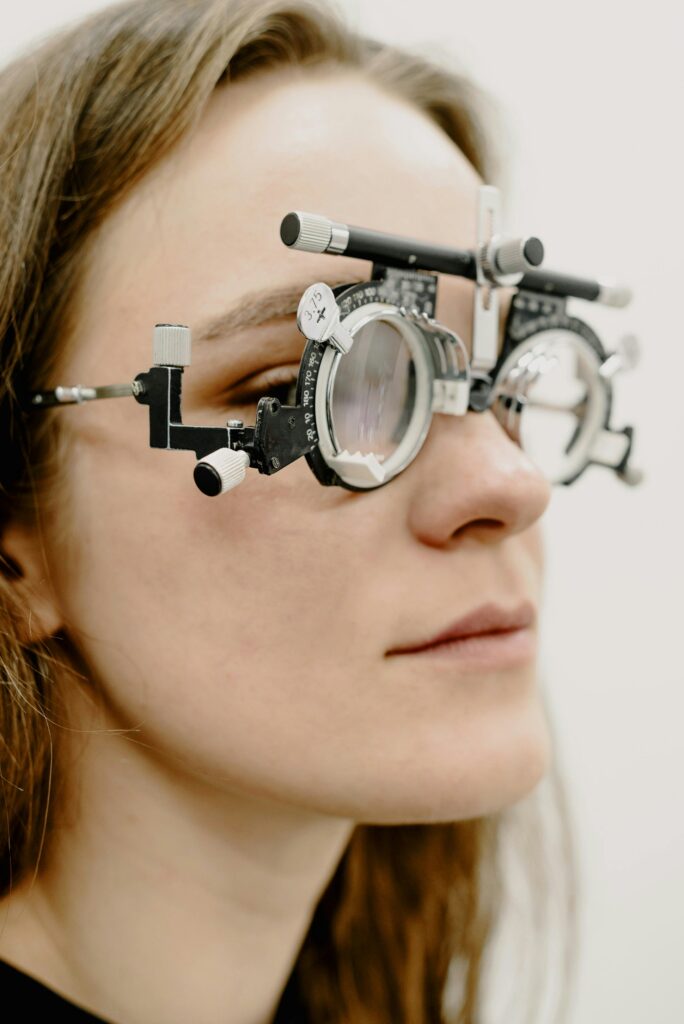HOW TO UNDERSTANDS YOUR EYESIGHT PRESCRIPTION
We have all received prescriptions for glasses, but what exactly do the numbers mean? Here is a quick guide to understanding your prescription.
We recommend that you have your glasses prescription assessed every time you have your eyes tested at Leightons. The prescription describes precisely what lens correction your eyes need to see clearly. UK prescriptions follow a specific format, with several measurements for each eye.
An explanation of the table
As part of your eye examination, your Optometrist will record accurately the values measured for each eye.
Sph (Sphere)
It is possible that you recognize this number. The lens power number, measured in diopters, describes your glasses’ strength and level of correction. If you wear glasses, you may know your lens power number, either minus eye power or plus eye power. Having a minus number, such as -2.75, indicates you are short-sighted and have difficulty focusing on distant objects. In the case of long-sightedness, a plus number indicates that close-up vision is more blurred or tiring for the eyes.
Patients are typically within the range of -25.00 or +25.00 in the sphere value, and the majority will fall within the range of +4.00 or -4.00 in the sphere value.
There may also be a need for a ‘back vertex distance’ (BVD), which represents the distance from the back of the lens to the front surface of the eye, in the case of individuals with high prescriptions, those with +/- 4.00 or higher.
Cyl (cylinder)
Astigmatism is measured by the cylinder value, which measures the deviation of the eye’s curvature. To correct it, we use a Cyl value, which is equal to astigmatism’s opposite. Cyl values describe these precise alterations to improve vision.
Axis
It is important to note that Axis and Cyl are interdependent – if you don’t have one, you can’t have the other. The axis value tells the lens maker where to place the astigmatism correction (the Cyl value), which is always between 1 and 180 degrees.
Prism and Base
In the event that your eye muscles are not working together effectively, we can correct them by using a prism and base value.
As the prism value increases, it moves up in 0.5 increments. Base refers to the direction of the prism: up, down, in, or out and is applied individually or to both eyes at the same time.
What is the difference between a ‘distance’ and ‘near’ prescription?
To date, we have only discussed the top row, ‘distance’. For distance prescriptions, you can be either long-sighted or short-sighted.
Your glasses will look thinner at the center and thicker at the edges if you are shortsighted. You require a minus power lens if you are short-sighted. Those with long sightedness require a plus power lens and will notice that the lenses in their glasses may seem thicker in the middle and thinner at the edges.
This is referred to as a magnifying lens or ‘plus eye power’ in reading glasses, and it is indicated by an added number, such as ADD +2.00, which signifies that the magnification of the reading glasses is increased by 2.00 diopters.
As well as an “intermediate add”, you may include an “intermediate add” to assist with hobbies (such as browsing the web on your computer).
In addition to advising you on the type of prescription you require, a Qualified Dispensing Optician will assist you in selecting the appropriate frame for your prescription as well as discuss additional options such as lens tints and glare support.
















